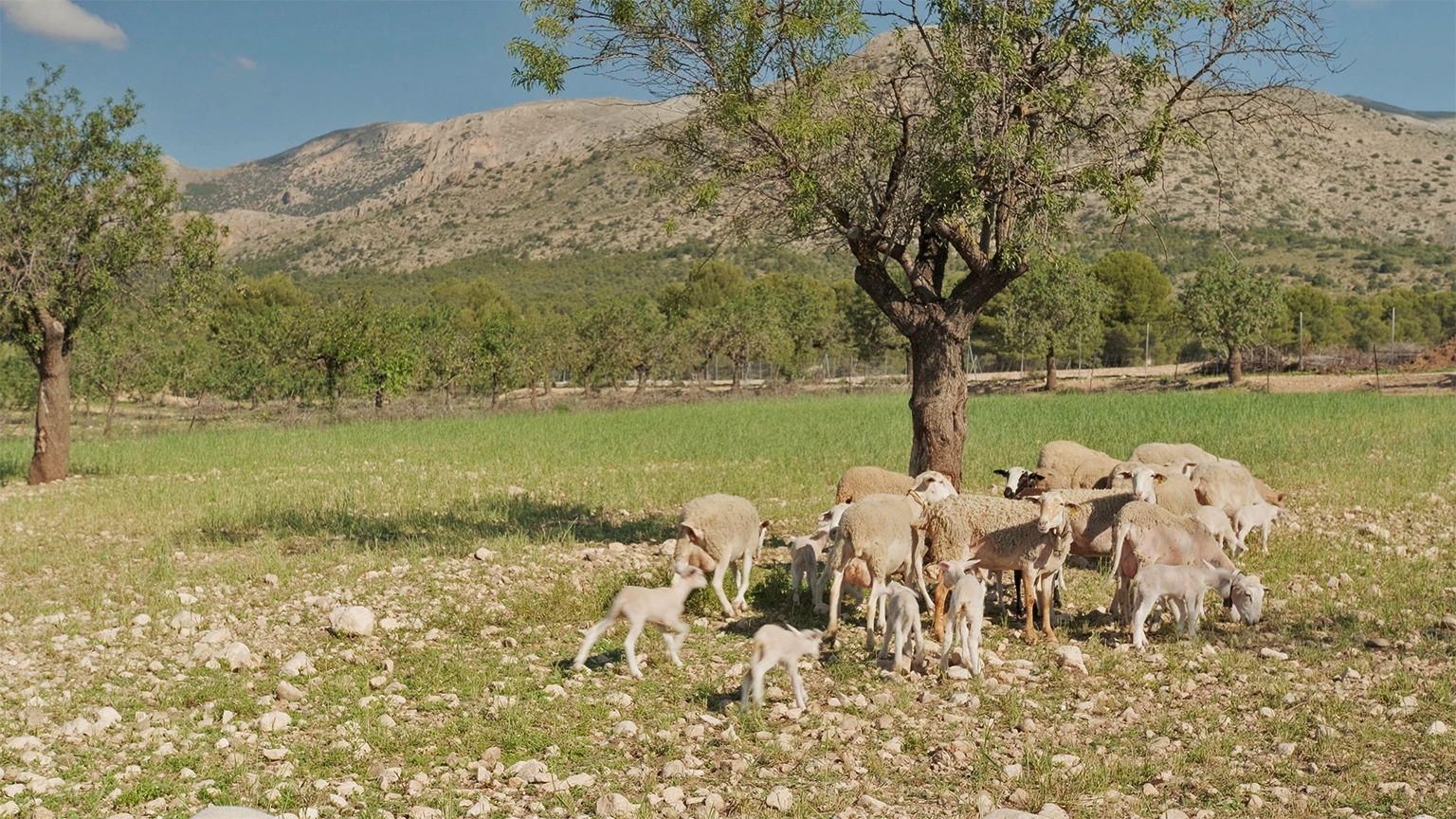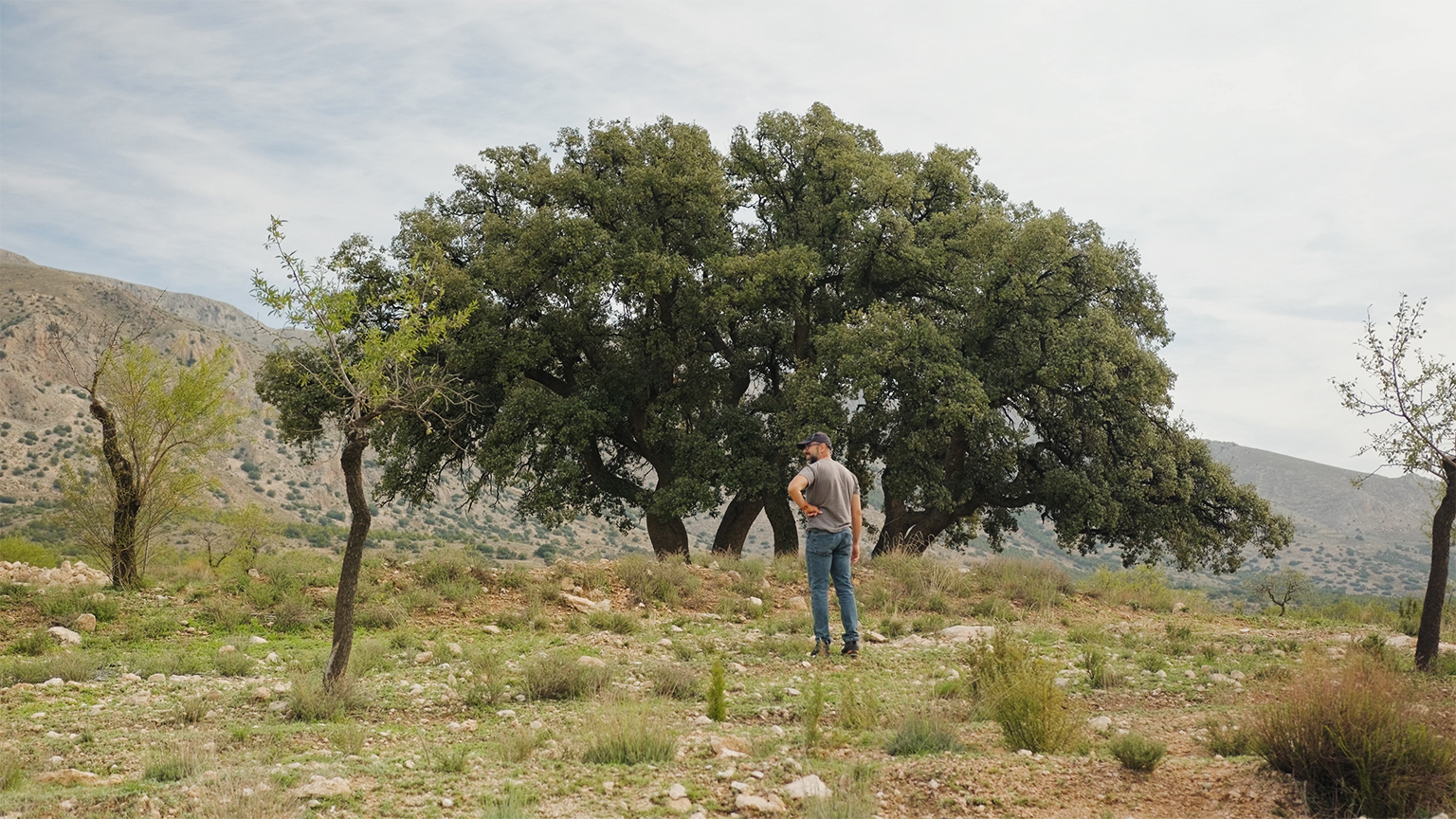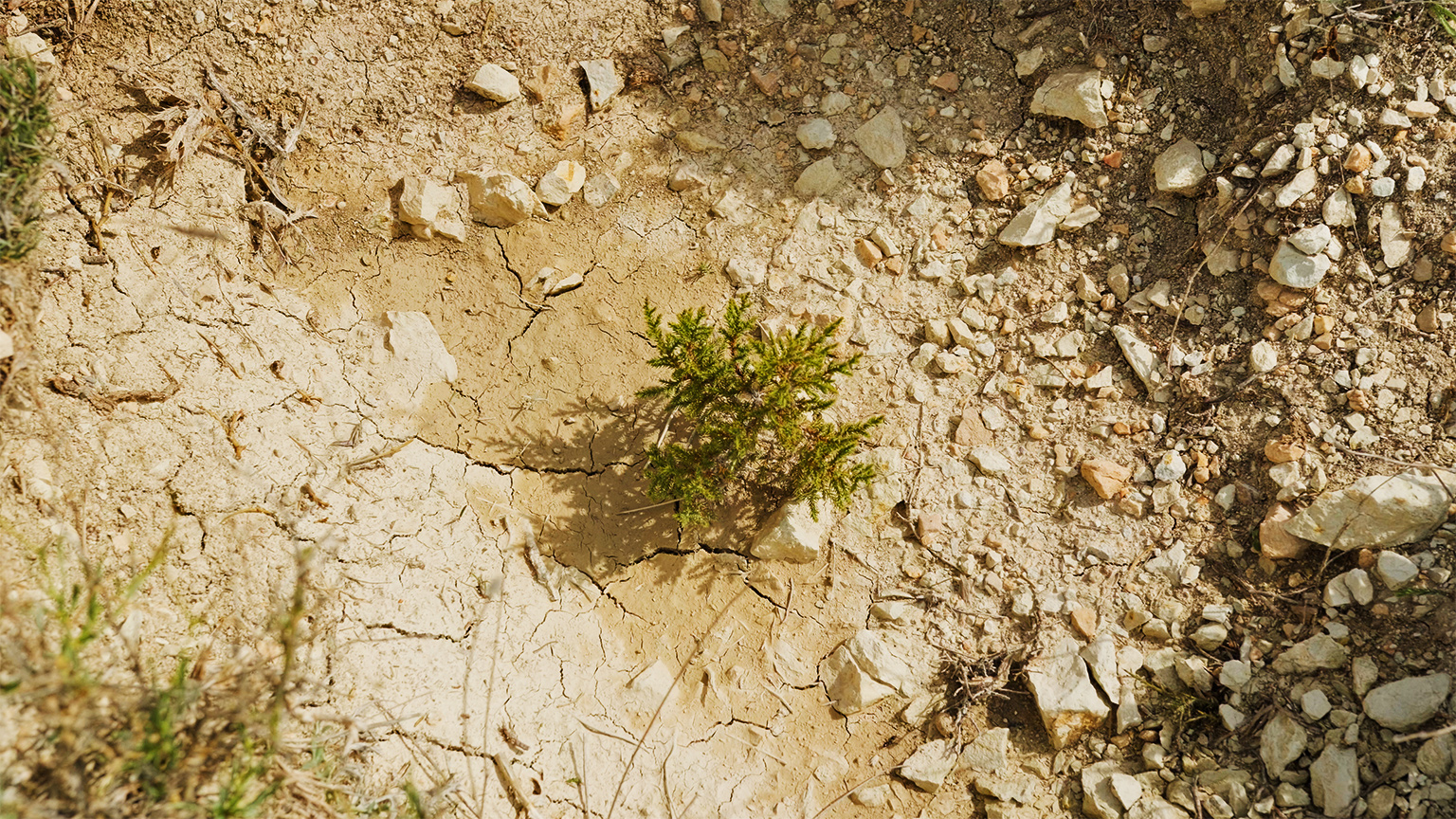- Southeastern Spain is experiencing the northward advance of the Sahara Desert, leading to declining rainfall, soil degradation, and climate change-induced droughts, threatening agricultural lands that have been farmed for many centuries.
- Local farmers recently began adopting regenerative agriculture practices to better withstand long, persistent droughts punctuated by torrential rains and subsequent runoff.
- Many farmers in the region have formed a collaborative group called Alvelal to address encroaching desertification, depopulation, and the lack of opportunities for youth.
- Alvelal members manage more than 15,000 hectares (37,000 acres) of farmland using regenerative agriculture techniques and aim to expand further, conserving more farmland against the onslaught of climate change, while restoring natural corridors and promoting biodiversity.
LOS VÉLEZ, Spain — Much has been reported about the Sahara Desert’s inexorable shift southward into Africa’s semiarid Sahel, and of dogged efforts by local villagers to grow a Great Green Wall as a buffer against encroaching sands. But little has been written about the Sahara’s northward advance into Spain.
Farmers here, though, are deeply aware of the swift changes coming to their orchards, crops and pastures, as these agricultural lands turn dryer and dryer.
In 2023, these farmers endured both a record parching drought and dangerously destructive downpours — both likely intensified by global warming. In Almería, in southeasternmost Spain, rural residents continue grappling with the consequences of human-driven desertification, marked by dwindling rainfall due to a changing climate, punctuated by disastrous deluges, shrinking forests, and severe soil degradation.

This year, Spain suffered its worst drought in almost a century. The Los Vélez region in Almería, with average precipitation of just 400 millimeters (15.7 inches) annually, didn’t receive a single drop of rain for more than 150 days. Then, in May, more than 200 mm (7.9 in) fell in a single week.
This drought-deluge cycle did serious harm to soils. In the first half of 2023, scorching sun dried up the soil, then torrential rains washed away its nutrient-rich organic matter, turning once-productive croplands into barren sand. Today, struggling groves of almond trees bear deep erosion scars caused by runoff.
But such harm isn’t seen everywhere. Santiaga Sánchez, daughter and granddaughter of shepherds, says her farm has proven more resilient than others. “It’s only now that I’ve realized the importance of the soil restoration techniques I’ve been using on my farm,” she says from her cortijo, a farmhouse, outside the small town of Chirivel.
For years, Sánchez has practiced regenerative agricultural methods: doing terrace farming, carving out swales, cultivating green cover crops under her almond trees, and increasing the soil’s capacity to absorb and retain water. This helped her trees better withstand this year’s drought and mitigate the torrential rain.
Sánchez isn’t alone. Nearly a decade ago, she and other local farmers founded Alvelal, a collaborative that includes farmers, livestock breeders, entrepreneurs, university researchers, and a variety of institutions to address current regional threats brought on by desertification, depopulation, and lack of opportunities for youth.
‘Prepare and adapt!’
The climate change denialism rife in the U.S. and elsewhere doesn’t seem predominant among these Iberian farmers. They’ve watched firsthand as desertification advances in Spain, consuming 1,500 square kilometers (579 square miles per year, according to Spain’s State Meteorological Agency (AEMET).
With a 1° Celsius (1.8° Fahrenheit) average temperature rise in Andalusia in southeastern Spain between 2007 and 2015, along with an average loss of fertile soil exceeding 21 metric tons per hectare per year, the region’s farmers and livestock owners are facing challenging climatic conditions.
“We have to prepare and adapt our crops, cultivation methods, and farming practices to handle potential sudden changes,” Sánchez says. “While our native animals and plants had hundreds of years to adapt in the past, climate change is now progressing rapidly.”
Well-managed soils are proving to be farmers’ best ally as they adapt to bouts of drought and deluge. They combat desertification by preventing erosion, promoting soil restoration, doing water harvesting, and encouraging biodiversity recovery — all crucial to the future of locals’ agricultural livelihoods.
Many of Alvelal’s members view agriculture as part of the broader ecosystem, where natural zones and farmlands mutually benefit each other. They nurture both natural and productive lands to create a mosaic of interconnected biodiversity hotspots. Today, ecological corridors link the region’s mountain ranges, fostering a more resilient landscape as a buffer against worsening water scarcity and rising temperatures.
Alvelal now boasts more than 250 farmer members who manage more than 15,000 hectares (37,000 acres) using regenerative agriculture. They aim to expand to 60,000 hectares (148,300 acres) of organic almond farms, employing agroecology techniques. They’ve also planted more than 260,000 trees, with the goal of restoring 25,000 hectares (nearly 62,000 acres) of natural corridor by 2034.


Farming the old-new way
Yields of non-irrigated crops like wheat, corn and sugar beet are expected to decrease in Southern Europe by up to 50% by 2050 due to climate change, according to projections by the European Environment Agency (EEA), using a high-end carbon emission scenario. This could lead to very significant cropland abandonment by the end of the century.
But the farmers of Alvelal are fighting back using techniques both old and new. “One thing I was always clear about when I was young was that I wanted to follow my father’s footsteps,” Sánchez recalls. “I wanted to do it just as he did — combining livestock breeding with farming, an integrated approach.
“Today, we might call it regenerative agriculture or agroecology, but it’s essentially an agriculture rooted in common sense. It’s not much different from what my father used to do,” she adds.
The territory managed by Alvelal’s farmers encompasses a huge area — 1 million hectares (2.47 million acres) across five regions: Los Vélez and Alto Almanzora in Almería province, Guadix and the high plateaus of Granada province, and northern Murcia province. This vast expanse of natural and cultivated land shares a semiarid climate, along with small farm communities that hold history, culture and today’s environmental challenges in common.
The region has evolved over centuries due to a changing climate and human intervention — especially since the adoption of modern commercial farming 50 years ago. “In the past, the landscape was a diverse mosaic of different features. There were cereal fields, fallow lands, uncultivated areas, and a few small almond tree groves. It truly resembled a patchwork, with distinct zones coexisting harmoniously,” Sánchez explains.
Modern commercial farming brought machinery use, synthetic fertilizers, and water-intensive practices. “We entered the era of fertilizer dependency,” she adds with a tone of regret.
These practices, now widespread across Southern Europe, have proved to be unsustainable, depleting soil organic matter by not allowing replenishment via the addition of mineral or organic fertilizers. A recent EEA report revealed that 74% of Southern Europe’s land is covered by soils with less than 2% organic carbon in the topsoil. Modern agriculture is blamed as a key driver of that degradation.

Also making these practices unsustainable are the rising prices of synthetic fertilizers, which put financial pressure on farmers. Some have also recently faced increased operational costs due to market constraints from the Russian war in Ukraine. “I know livestock breeders who had the money to buy [livestock] supplies but couldn’t find food for their sheep,” recalls Sánchez.
But that’s not true of her farm. Outside her cortijo, the bleating of hundreds of sheep fills the air. “Everything my livestock needs, whether from farming or our natural areas, is produced here. There’s no need for Ukrainian grain,” she says. “Relying on what is purchased and produced elsewhere is not sustainable.”
Sánchez grows sufficient cereals to feed all of her sheep, which also graze in the natural areas. Under her almond trees, she plants legumes and grasses that her herd consumes while they grow. Those plants also add their nitrogen and organic matter back to the soil. Sheep manure enriches the fields, providing essential nutrients for crops.
Next to the barn, Sánchez climbs a pile of composting manure. She takes a handful and smells it. “To you, this might be sheep poo. But to me, it’s ‘brown gold.’ Because it’s vital for soil health.”


Reviving degraded soil
A few kilometers away, Miguel Ángel Gómez drives a tractor to his father’s almond grove. A farmer and agronomist engineer, he has used this estate as a living laboratory since 2014 to study how regenerative agriculture enhances soils and water harvesting. Today, he’s Alvelal’s regenerative agriculture coordinator. By collecting data from other Alvelal member farms, Ángel Gómez has been able to track soil recovery over the years.
As a result of his long-term findings, Alvelal farmers today allow weeds to grow tall beneath the almond trees. Instead of plowing them under and disturbing the microorganisms, tractors are used to crush the green cover, which is later mulched atop the soil. As this biomass decomposes, it nourishes the soil microorganisms, improves soil structure, and provides nutrients. The decaying mulch also enhances soil water infiltration.
But the fruits of all this labor came slowly. The fulfillment of this regenerative process took a decade, according to Ángel Gómez. “We began by reducing plowing depth and frequency. This was the first challenge — convincing my father to embrace a new approach. Later, we allowed grass and legumes to grow under the almond trees during parts of the year.
“Once the soil fully recovers, becomes healthy and nourished (like a sponge that absorbs and retains water), we can maintain the green cover year-round without impacting tree growth or almond production,” he explains.
Data collected between 2016 and 2022 by the Alvelal association suggest that regenerative practices can increase soil water infiltration by up to 55%, and boost soil organic matter by 15.2%, along with a 31.7% increase in microorganism counts. Biodiversity on regenerative farms has also exploded, rivaling that of some natural zones, and underscoring the crucial restorative role of regenerative agriculture within a broader ecosystem.
“Agriculture plays a pivotal role in halting desertification. In many cases, we find abandoned farms that have been void of vegetation for 40 or 50 years. Instead of being reclaimed by nature, they remain barren due to erosion,” Ángel Gómez says.


Restoring resilient landscapes
From its inception, Alvelal adopted a landscape restoration approach inspired by the Dutch NGO Commonland whose vision is “4 returns, 3 zones, and 20 years”. The four returns include a return of inspiration, a social return, natural returns, and financial return. Guided by these principles, within a time span of two decades, landscape restorers work to nourish three zones: their farmland, natural areas, and the creation of new business opportunities for local people.
Today, Alvelal is part of Commonland’s partnership network, a global initiative involving 23 projects in 19 countries that demonstrate regenerative agriculture’s transformative potential by addressing both land degradation and providing income for local communities.
In collaboration with its local partner, the Aland Foundation, Commonland says it hopes the southern Spain project will be a scalable example and model for the entire Iberian Peninsula and other semiarid landscapes.
Fernando Bautista, responsible for natural zone programs at Alvelal, emphasizes how strongly sustainable agriculture relies on creating resilient and healthy ecosystems. These revived ecosystems then ensure water harvesting, prevent soil erosion, and promote biodiversity.
“Vegetative cover in natural areas, be it shrubs, herbs or trees, acts like an umbrella in rain. It shields from drops [in precipitation] and slows water [flow during heavy rains], reducing kinetic energy and runoff,” Bautista explains. “Achieving this allows more water infiltration, improving subsurface water levels and preserving aquifers and springs.”

Landscape restoration requires far more than merely planting trees, he says. As Bautista speaks, he stands beneath a 700-year-old female Spanish juniper — a single tree that miraculously escaped deforestation on El Cortijico, the mountain that oversees Spain’s Los Vélez region.
Alvelal has since planted 700,000 seeds and 30,000 saplings here, primarily juvenile Spanish junipers, to preserve the genetic material of this seven-century-old specimen. The reason: this ancient juniper has shown its ability to endure by weathering numerous climate change challenges, including prolonged drought, heavy snowfall, high temperatures, and floods.
“We need to adapt to an uncertain climate,” Bautista emphasizes. “We must use plants [that are] resistant to drought, capable of enduring extended water scarcity, and surviving even if there [is extremely heavy] rainfall in a month. We need the hardiest plants that can withstand both cold and heat, with the broadest tolerable temperature range.”
Spanish junipers have extremely slow growth rates, taking up to a century to mature. Bautista acknowledges that the fruits of Alvelal’s labors may only be enjoyed by future generations. “When I look at this [single ancient] specimen, I can imagine what the area might have been like in the past, with multiple trees of this size, interspersed with other species. That’s what we aspire for in the future, even if we won’t be around to witness it.”
In a modern era of rapid-fire carbon credit trading and fast-track climate solutions, some question Bautista’s long view. “Why do we do it?” he asks. “Because we see that under the right conditions and over time, resilient green structures can form. We restore ecosystems. We restore biodiversity.”


Making landscape restoration profitable
Back at her cortijo, Santiaga Sánchez prepares harvested almonds for delivery to a local bar in Vélez-Rubio. She also markets nuts through Almendrehesa, a company established by Alvelal to create new business opportunities for farmers. Her segureño lamb meat offers more income.
But making regenerative agriculture financially viable remains a key challenge for Alvelal. Sustainable methods can decrease production during the first three years after their introduction, and take 15 to 20 years to surpass conventional agriculture yields, explains Roberto García, an ecology professor at the University of Jaén.
Embracing sustainable farming techniques “will be challenging until product prices reflect their environmental benefits,” García adds. Current economic discussions center on how farmers can benefit from other novel sources of income, such as carbon trading.
García’s research has shown that regenerative methods can achieve tremendous soil carbon sequestration capacity, averaging 1.4 metric tons per hectare per year. Carbon Farming, encouraging improved sequestration, will be part of the European Union’s mission to transition to healthier soils by 2030.
For Sánchez, preserving landscapes and effectively fighting climate change largely depends on consumers’ willingness to support sustainable products. “The question here is how do we educate urban dwellers about the serious issues already at play, which aren’t distant and require collective action?”
To make that connection, Sánchez regularly organizes tourist trips so visitors can witness her farming practices firsthand. “I explain how crucial it is to choose one product over another. When I demonstrate the regenerative techniques I use in the soil, they’re willing to pay 3.50 euros [$3.70, for sustainably produced almonds,] instead of 2.50 [$2.60] for a [conventional] packet of almonds. When they understand the impact and how many people can make a living without leaving their homeland, they’re willing to pay the extra euro.”
Banner image: Regenerative agriculture methods, such as green cover crops, help Santiaga Sánchez’s farm better withstand persistent drought punctuated by sudden violent storms. Image by Xaume Olleros for Mongabay.
Morocco rolls out a phosphorous-fueled plan to heal soils across Africa
FEEDBACK: Use this form to send a message to the author of this post. If you want to post a public comment, you can do that at the bottom of the page.













